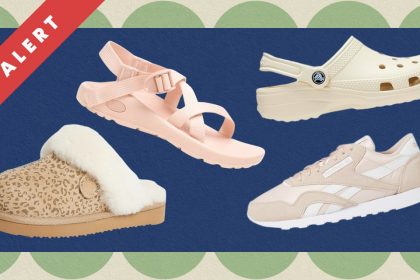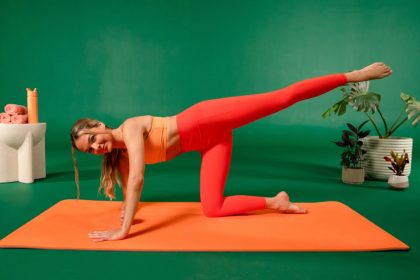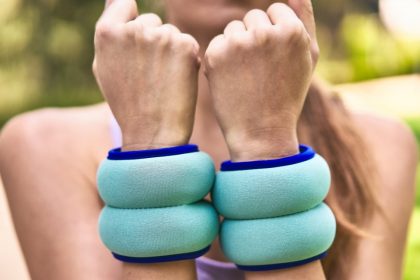All products are independently selected by our editors. If you buy something, we may earn an affiliate commission.
Winter in New England can be a dreary time. To keep the chilly, gray days from getting to me, I make it a point to grab some air (and a mood boost) by psyching myself up to run outside, even when the weather makes me want to hide under a duvet.
I’ve cycled through lots of top-notch cold-weather running gear, but last winter, I discovered a new favorite weapon against freezing temps: alpaca wool. Yep, these adorable animals are good for more than just memes and animal therapy—their coats can also create next-level clothing.
First, I was sent a baselayer from Paka ($75, pakaapparel.com). Then shortly afterwards, my husband fell victim to an Instagram ad for socks from Pacas ($52 for three, pacas.com); he justified buying himself a multipack by gifting me one of the pairs. Neither the shirt nor socks looked like much out of the box—the designs were pretty plain. But once I slipped them on, both were so luxe that it almost felt wrong to get them sweaty. I eventually did, though, and found a whole new way to enjoy winter running. These garments keep me warm and super cozy without being bulky. And because they don’t hold onto moisture, my skin stays shockingly dry and my feet remain blister-free, even when the miles add up.
Paka Women’s Everyday Baselayer
Pacas 3 Pack Women’s Crew Socks
Material made with alpaca wool has loads of benefits. “Alpaca wool fiber is soft, hypoallergenic, insulative, strong, water-repellent, stain-repellent, flame-resistant, antimicrobial, odor-resistant, sustainable, and durable,” Susan Sokolowski, PhD, a professor of sports product design at the University of Oregon, tells SELF.
As researchers wrote in a 2021 analysis, “the quality of alpaca wool is considered to be among the best in the textile industry”—and I gotta agree. I originally wore my alpaca pieces for running, but I’ve loved them so much over the past year that I’ve also put them on for hiking, yoga, working from home in our not-wonderfully-insulated old house, and just, you know, living. Here’s why.
Alpaca fiber makes for incredibly soft fabric (usually)
As a kid, I used to walk through clothing stores touching every piece of fabric until I found the softest one. These days, I keep my hands to myself a bit better, but I’m still a sucker for plush materials, and that’s what first sold me on alpaca. Slipping on something made with these fibers can feel like wrapping yourself up in an expensive blanket.
That said, I recently got a Sol Hoodie from Paka ($95), and every once in a while, I’ll feel a bit of an itch through all the softness. I later learned this is because the quality of the wool varies. There are seven grades of alpaca fiber, ranging from 15 to 34.9 “microns,” which is a measurement of the average diameter of a wool’s fibers. “The lower the micron number, the finer and softer the fiber,” Dr. Sokolowski explains.
She adds that alpaca fibers most often range from 18 to 23 microns. Cashmere, for comparison, must be made of wool that averages no more than 19 microns—meaning the highest grades of alpaca fiber can feel similar to cashmere. Lower grades, however, can be rougher on your skin: Researchers have found that fibers thicker than 30 micrometers have what they call a “prickling factor,” or what I call a sudden need to squirm.
It stays fresh for a surprisingly long time
Original photo by SELF writer Jennifer Heimlich
Recently, I took my Paka Sol Hoodie on an 8-day trip through the Pacific Northwest. Every day, my companions and I went running, hiking, or both (and sometimes paddleboarding too). The three other long sleeved-shirts I’d packed soon began to smell. But my hoodie passed the sniff test to the very end—by our last day, it was all I could reasonably wear in public.
That’s likely because alpaca fiber is naturally odor-resistant. “Alpaca fiber has a waxy coating and low moisture retention,” Dr. Sokolowski explains. “This enables dirt to shed off the fiber, preventing the growth of odor-producing bacteria.”
The material stays “fresh” not only smell-wise, but also when it comes to durability over time. An older, 2005 study found that alpaca fibers take longer to break than wool ones, which means the cloth is more likely to withstand pilling and less likely to wear out. Similarly, a 2021 study found that alpaca fibers are more elastic than sheep’s or goat’s wool.
This matches up with my own experience. I wore my Paka base layer at least once a week last winter, putting it through both the washer and dryer every Friday, and the fabric still feels like new, with no pills in sight. If anything, I’d say it’s only gotten softer.
It’s both warm and breathable
One of the main reasons I reach for my alpaca gear so often in the cold is because when I slip it on, I know I’ll be warm, despite how thin the material is. This makes it ideal for layering under a running jacket when I’m getting my miles in. Or, if I’m staying in, I’ll zip up the Paka Breathe Women’s Zip Hoodie ($179, pakaapparel.com) for extra coziness.
Original photo by SELF writer Jennifer Heimlich
Original photo by SELF writer Jennifer Heimlich
Paka Breathe Women’s Zip Hoodie
At the same time, I’m always surprised by the fact that I don’t overheat while running in alpaca gear when temps tick up to a balmy 55 degrees or so. In the spring and fall, I’m able to comfortably wear long sleeve alpaca tops on speedy runs in the sunshine without getting too hot (as long as I’m rocking shorts on my bottom half).
Alpaca wool is marketed as “thermoregulating,” which honestly sounds too good to be a real thing. However, “there is truth to these claims,” Dr. Sokolowski says. She explains that because alpaca fibers have a hollow core, they trap air, which can help insulate you from the heat or cold. They also wick moisture away from your body instead of retaining it, so you’re less likely to end up soaking in your own sweat (unpleasant).
Bottom line
Alpaca has become my go-to for making chilly days less miserable. It keeps me comfy but not claustrophobic, and I can go surprisingly long without washing it if I have to, which is a major bonus in my book.
I’ve found the biggest limitation to my alpaca love is that there’s not a huge array of options out there for activewear. Lululemon makes a cropped alpaca and merino-blend sweater ($128, lululemon.com) and cardigan ($148), and Quince sells a baby alpaca-wool crew sweater ($50, quince.com), but those aren’t exactly designed to work out in. REI carries Arms of Andes, which is more in line with Paka and Pacas, but all three of those brands focus on pretty simple styles.
Lululemon
Alpaca Wool-Blend Cropped Sweater
Lululemon
Women’s Alpaca Wool-Blend Cardigan Sweater
Quince
Baby Alpaca-Wool Crew
Arms of Andes 160 Ultralight Alpaca Wool Crew Neck Base Layer T-Shirt
Arms of Andes 300 Lightweight Alpaca Wool Base Layer Leggings
Arms of Andes 160 Ultralight Alpaca Wool Long-Sleeve Base Layer Shirt
I’m hoping that more activewear brands will catch on to the magic of alpaca wool soon. But if you’re just looking for straightforward basics that will keep you warm, dry, and smelling fresh for days, I can tell you this: It’s hard to beat what alpacas have to offer.
Get more of SELF’s great product recommendations delivered right to your inbox (for free!).
Related:







